For a children’s concept that’s seemingly so simple, it took me years to understand it. In theory I should love Rube Goldberg. I love books and the idea of engineering, tinkering with things, plus what’s not to love about Rube Goldberg? It’s like steam punk. You’ve rig up everyday objects and arrange them so that their energy will make an impact on something, like opening a door or squeezing toothpaste out of the tube. It’s a simple act made needlessly, but entertainingly, complex. Rube Goldberg’s Big Book of Building solves the issue that I had with the process on the very first page.
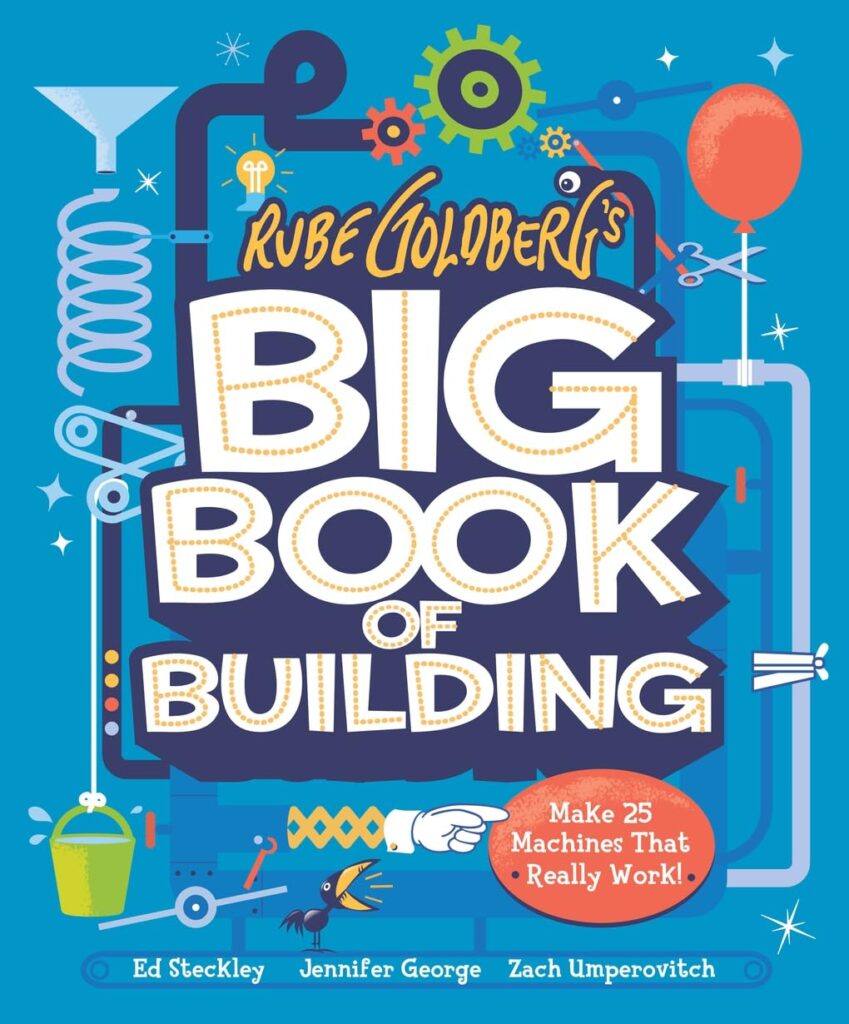
The title of this page is “How to Rube”. It lists five important things to consider before choosing a project. It was the third reason, trial and error is critical to Rube Goldberg Machines and they rarely, if ever work on the first attempt. They might work on the first attempt, but probably won’t and will require numerous tweaks or an adjustment until they do the simple task that it has been designed to do. The other thing that’s always bothered me about project books, which this essentially is, is that the supplies needed to conduct the experiments were not commonly found in the house.
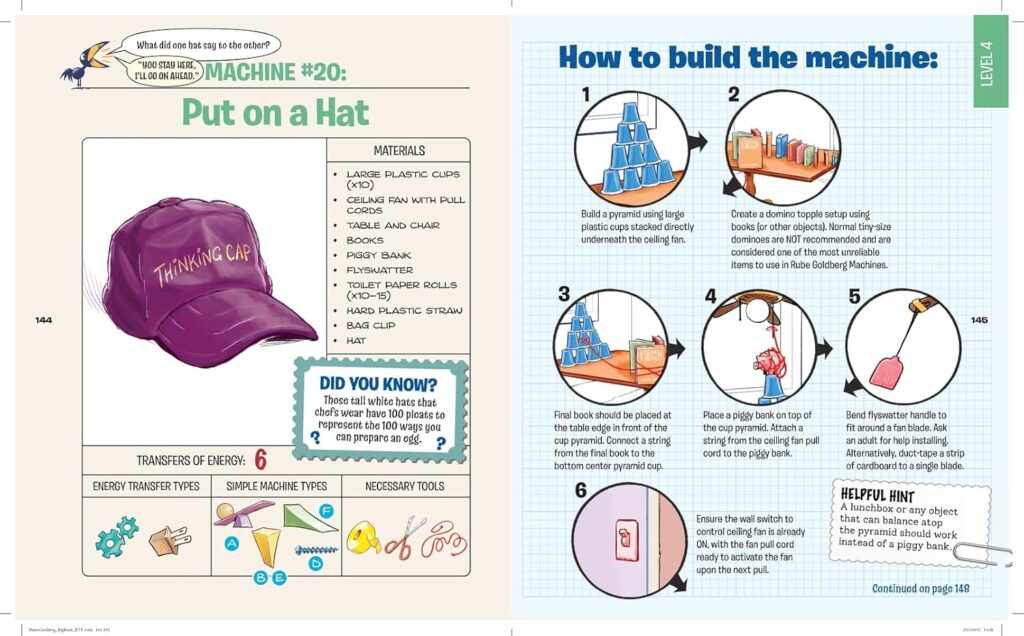
Rube Goldberg’s Big Book of Building got that memo and has produced a big, hardback book with 25 machines that can be made using six necessary tools. Duct tape, scissors, string, a hot glue gun, a surge protector, and zip ties are all that’s needed to get your creative on. Those supplies are the glue that exists in every project. The remaining supplies are things that families with kids will most likely have, like balloons, rulers or basic food that’s around the house.
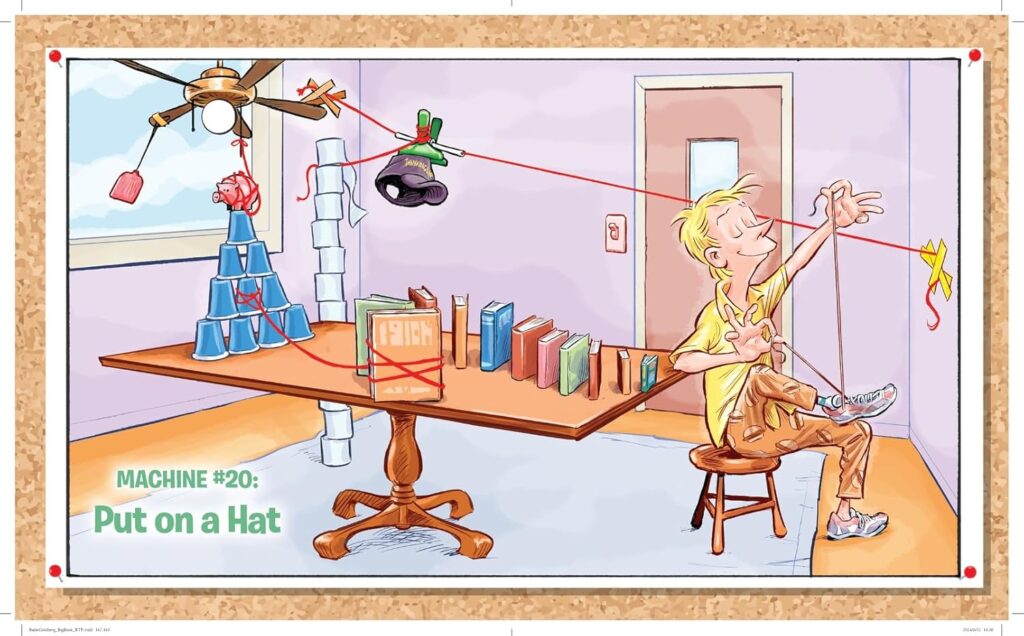
The book has lain out that these Rube Goldberg Machines are meant to be an experiment. It’s a process of trial and error to get these pretty, Frankenstein machines to do their magic. The table of contents breaks the machines down into five categories, from three steps to seven or more steps. There’s also a bonus chapter that features a STEM-focused look at RGM in the world, troubleshooting your machines, alternative parts you can use to make yours, a glossary of science terms, motivational words from the authors, contests that you can enter, history on the real Rube Goldberg and more.
I had no idea that he was a real person. He studied engineering, quit that profession to become a cartoonist, and had his name listed as an adjective by the time he was 50. How has a movie not been made about this man? His machines have been featured in many films, but his life is the custom-made sort, in an overly cumbersome fashion for the big screen, or a well-made version on the streaming screen. But wait, there’s more, how about a video library that shows all 25 machines of the book in action?
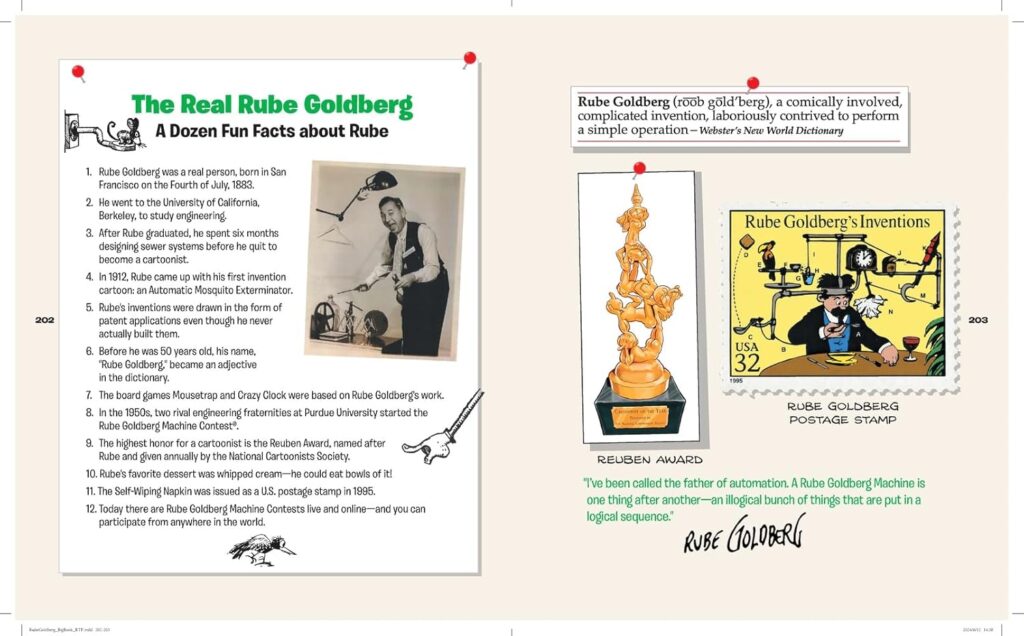
Rube Goldberg’s Big Book of Building made me a believer. If you’re already in the know, then consider this hardback book a reference for those projects that you and your kids want to create. Because of the book’s chronological listings, its simple list of needed supplies, large illustrations, and oversized pages, it comes across as an educational STEM comic book at times. And considering that’s one of the things that the real Goldberg was known for in his lifetime, it’s quite fitting.
Rube Goldberg’s Big Book of Building: Make 25 Machines That Really Work! is from Ed Steckle, Jennifer George and Zach Umperovitch and is available from Abrams Books for Young Readers, an imprint of Abrams Books.
There are affiliate links in this post.
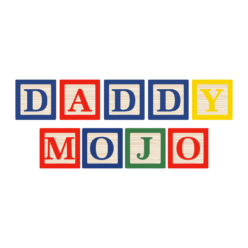



 Facebook
Facebook Twitter
Twitter Flickr
Flickr GooglePlus
GooglePlus Youtube
Youtube